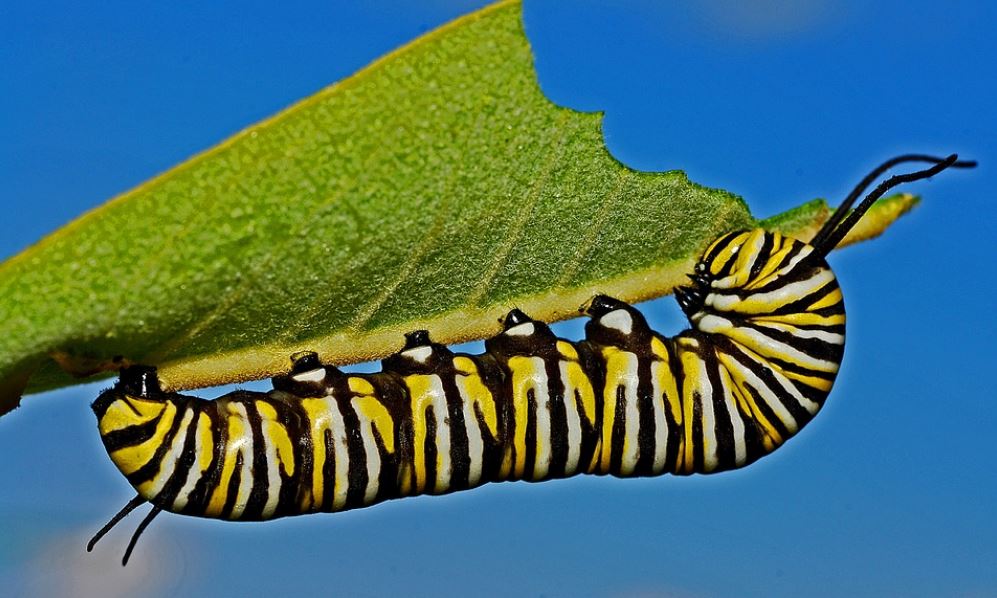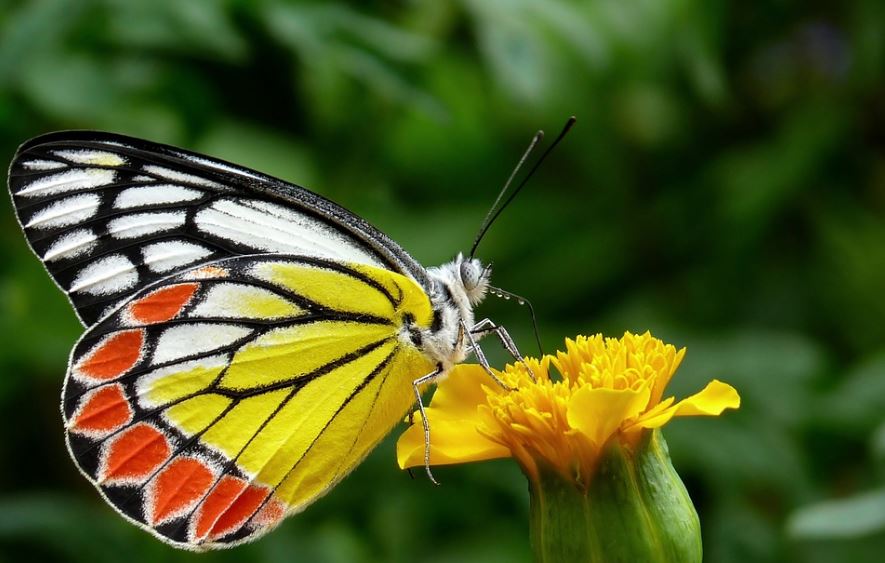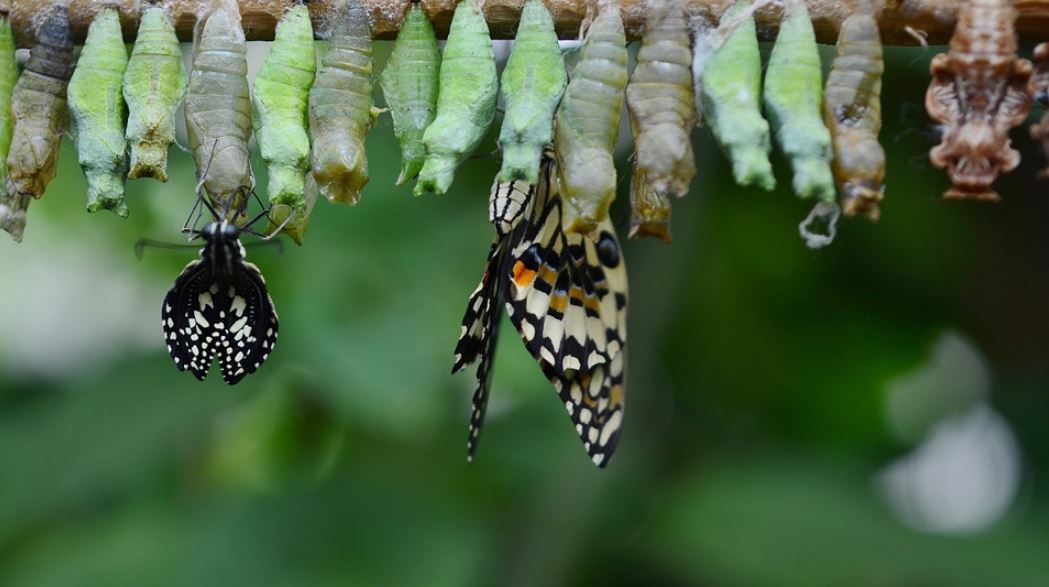Are the caterpillars aware of their transformation into a butterfly? It may sound like a child’s question, but as they say, sometimes kids just ask us the hardest stuff. So, are they, really? To answer this query, we must first discover how these tiny little creatures grow and get the greatest glow-up of their lifetime.
Butterflies are not only gorgeous insects, but they are also as vital players in the ecosystem as any living thing. Just like humans are responsible for taking care of the environment, these fantastic beings play a unique role in maintaining the balance in biodiversity. What’s more curious about these wonderful arthropods is how they transform – from crawling through tiny branches with their soft, boneless body to exploring the winds with their stunning wings.
Metamorphosis
Before they become magnificent creatures, they undergo a dramatic transformation akin to how human beings evolve from childhood to puberty and adulthood. This process is known as metamorphosis. But, a butterfly’s transformation is way more complicated than what we think.
The term ‘metamorphosis’ is of Greek origin, translating to a change of form or shape or transformation. Given its wonderful (and dramatic) process, people have always used a butterfly’s transformation (life cycle) as a metaphor for a person’s development. To most of us, the physical and chemical processes involved in a butterfly’s metamorphosis can be both perplexing and awe-inspiring at the same time.
They Start as Crawling Creatures
A butterfly’s life cycle is absolutely one of the most beautiful lessons children can learn in grade school. At a young age, we learned that butterflies, as with any other insects, lay eggs. Those eggs, securely placed unto leaves, are hatched into tiny larva or caterpillars.
Caterpillars are those brightly colored worms you see crawling through the tiny stems in your garden. Their job is to spend most of their time eating (a job which we all secretly wanted to do). These crawlers would chew down as many leaves as they could – storing enough energy while prepping themselves for the next stage of their transformation.
When Caterpillars Stop Eating
Caterpillars can grow 100x bigger than their original size, depending on the species. In the course of its caterpillar phase, it splits and shreds its skin four or five times until it is ready to commence the next phase in its cycle. The full-grown caterpillar suddenly stops eating, signaling the end of the phase. It then lays dormant, turning into a pupa.
The pupa can usually be found hung up-side-down a stem, suspended under a branch, tucked under a leaf, or buried on the ground. This stage is a laborious one. Depending on the species and the climate, it could span for as short as a few weeks or take as long as several months or even a year.
Pupas are vulnerable in the wild, as they cannot directly protect themselves from harm while in this phase, although they are encased in a shell called a chrysalis. So, if you see one, resist the temptation of pinching or tearing it to see what’s inside. Take your hands off that delicate case and just leave the creature be.
What Happens Inside
People attribute a butterfly’s life cycle to a human being’s transformation from childhood to puberty and adulthood. However, most of the time, it’s metaphorical. Unlike us, who can notice the slight changes in our size and physique, butterflies go through a gruesome way of transformation.
Inside the chrysalis, the caterpillar’s body eventually dies. It breaks down from the inside into a liquefied state. The silent and subtle process is juxtaposed with cells rapidly growing, which would later become parts of a splendid flying insect.
Are Caterpillars Aware?
At this stage, we can finally deal with our question above. Well, just so you know, you’re not the only one asking this question! Many insect enthusiasts have attempted to solve this mysterious query and always end up with a common conclusion – inconclusive (pun intended).
Ok, let’s go about that a little bit.
Through experiments, scientists have long discovered that insects are sentient beings, meaning they can react to stimuli using their senses. Researchers found that caterpillars can remember their response to a stimulus in a certain experiment. The same can be said to butterflies which remember the same experiences or responses from which they were just caterpillars.
These findings prove that the insects can somehow retain memories even after their transformation. However, the experiment also suggested that butterflies’ thought processes are limited to stimulus-response and not detailed reasoning and logic like human beings. It gives scientists an inconclusive answer to the question. In short, no one really knows what.
Nevertheless, it is safe to say (at least, for now) that caterpillars have no such abilities. Additionally, in the first place, it has already ceased being a caterpillar during the actual phase of transformation – it has transformed itself into a liquefied state. Also, it is pretty convenient and comforting to imagine that it can’t ‘know’ what’s happening during metamorphosis, because well, being liquefied and aware at the same time might be too traumatic, even for an insect.
When They Come Out of Their Cocoons
After the process, the fully-grown butterfly waits still until it’s ready to come out of its enclosure, patiently times the perfect moment to reveal its grandeur to the outside world with a renewed mission: to find its true love. Just kidding. Butterflies don’t care about love; they’re just genetically wired to feed, mate, and lay eggs.
Of course, as they do so, they also perform extra work for the environment by pollinating the plants, making sure that the ecosystem thrives. As they fly from plant to plant, they also leave an almost magical trail of splendor that lifts every person’s mood with a sane taste in beauty. They serve as an indication of a healthy and thriving ecosystem, so if you don’t see them anymore in your area, you should be worried.
Final Words
Like bees, fireflies, and all other insects, butterflies may be small, but their existence dramatically affects the ecosystem. They are not only there for aesthetics, but they also serve a particular purpose, just like the rest of us. Protecting these creatures from harm is not only a question of whether they are sentient, self-aware, or not – it is imperative of us, being the only ‘known’ animals capable of complex thinking and reason.



